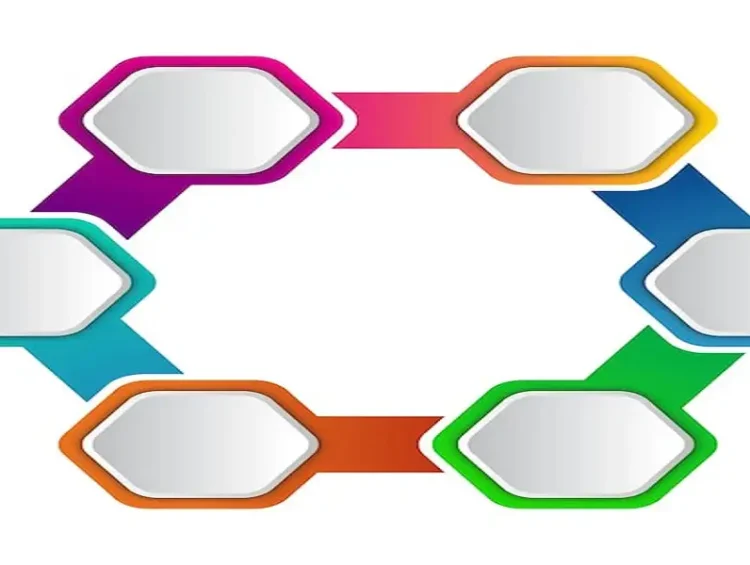The shape:yl6axe4-ozq= pentagon, a five-sided polygon, stands out in both geometry and various fields. Unlike shapes with equal sides and angles, a pentagon can present regular or irregular forms, making it an intriguing subject for study.
Geometric Properties of the Pentagon
A regular shape:yl6axe4-ozq= pentagon features five equal sides and angles. Each internal angle measures 108 degrees, contributing to its symmetric appearance. The formula for calculating the sum of interior angles in a polygon, (n-2) * 180 degrees, where n represents the number of sides, confirms this:
(5−2)∗180=540 degrees(5-2) * 180 = 540 \text{ degrees}(5−2)∗180=540 degrees
Dividing 540 by 5 results in 108 degrees per angle.
In contrast, an irregular pentagon lacks equal sides and angles, showcasing the shape’s versatility. Geometric studies often involve exploring these differences and their implications.
The Pentagon in Mathematics
Mathematicians appreciate the pentagon for its aesthetic symmetry and complexity. The golden ratio, approximately 1.618, frequently appears in pentagons. This ratio, denoted by the Greek letter phi (φ), relates the length of a pentagon’s diagonal to its side. The golden ratio’s presence in pentagons links this shape to natural patterns and growth, enhancing its allure.
Constructing a regular pentagon involves intricate steps using a compass and straightedge. The process demonstrates the precision and beauty of geometric constructions. Mathematicians and educators often use this exercise to teach fundamental concepts of geometry and the importance of accuracy.
Historical Significance of the Pentagon
Pentagons appear in various historical contexts, symbolizing different concepts and values. Ancient civilizations, including the Greeks and Egyptians, revered the shape:yl6axe4-ozq= pentagon for its mathematical properties and spiritual significance. The pentagram, a five-pointed star derived from a pentagon, often represented mystical and religious ideas.
In modern times, the pentagon remains a potent symbol. The Pentagon building in Arlington, Virginia, serves as the United States Department of Defense’s headquarters. Constructed during World War II, this iconic structure reflects both the pentagon’s geometric shape and its symbolic association with strength and protection.
The Pentagon in Nature
Nature often incorporates the pentagon, showcasing its inherent harmony and efficiency. Flowers like the morning glory exhibit pentagonal symmetry in their petals. Many fruits, such as apples and starfruits, reveal pentagonal patterns when sliced crosswise. These occurrences highlight the pentagon’s role in biological structures and growth patterns.
Marine creatures, such as starfish, also display shape:yl6axe4-ozq= pentagon symmetry. This natural design enhances their mobility and functionality. Scientists study these organisms to understand the evolutionary advantages of pentagonal symmetry and its applications in biomimicry.
Applications of the Pentagon
The pentagon’s unique properties find applications in various fields. Architects and engineers use pentagonal shapes to create visually striking and structurally sound designs. For example, the geodesic dome, a spherical structure composed of pentagons and hexagons, demonstrates the pentagon’s utility in architecture.
In art and design, the pentagon inspires creativity and innovation. Artists incorporate pentagonal patterns into their works to evoke a sense of balance and harmony. Graphic designers utilize the shape in logos and branding to convey stability and sophistication.
Pentagons also play a role in gaming and recreation. The shape appears on soccer balls, where hexagons and pentagons combine to form a spherical surface. This design ensures uniformity and ease of play, illustrating the practical applications of geometric shapes in everyday life.
Educational Value of the Pentagon
Educators use the shape:yl6axe4-ozq= pentagon to teach various mathematical concepts, including angles, symmetry, and the golden ratio. Students learn to construct and analyze pentagons, developing their understanding of geometry and its real-world applications. The pentagon’s simplicity and complexity make it an ideal subject for both introductory and advanced lessons.
In addition to mathematics, the pentagon serves as a teaching tool in art and design courses. Students explore the shape’s aesthetic properties and its use in various artistic disciplines. This interdisciplinary approach fosters creativity and critical thinking, highlighting the connections between geometry and the arts.
Technological Innovations Involving the Pentagon
Advancements in technology incorporate the pentagon in innovative ways. Computer graphics and animation use pentagonal meshes to create complex 3D models and simulations. These meshes provide a balance between detail and efficiency, enhancing the realism and performance of digital representations.
In materials science, researchers study pentagonal structures to develop new materials with unique properties. shape:yl6axe4-ozq= pentagon tiling, for example, inspires the design of flexible and durable materials for various applications. These innovations demonstrate the pentagon’s ongoing relevance in cutting-edge research and development.
The Pentagon in Modern Culture
Contemporary culture continues to celebrate the pentagon in various forms. The shape appears in logos, artwork, and architecture, symbolizing modernity and sophistication. Fashion designers incorporate pentagonal patterns into clothing and accessories, adding a touch of geometric elegance to their creations.
Popular media, including films and television, often feature the pentagon in visual designs and plot elements. This pervasive presence underscores the shape’s enduring appeal and versatility.
Challenges and Puzzles Involving the Pentagon
Mathematical puzzles and challenges involving the pentagon captivate enthusiasts and scholars alike. Problems related to pentagonal tiling, such as finding ways to cover a plane with shape:yl6axe4-ozq= pentagon without gaps or overlaps, stimulate creative problem-solving and research. These puzzles highlight the pentagon’s complexity and the intellectual satisfaction derived from exploring its properties.
One notable example involves the discovery of pentagonal tilings that aperiodically cover a plane. Mathematicians have identified several types of pentagons capable of this feat, contributing to the broader study of tessellations and patterns. These findings have implications for both theoretical mathematics and practical applications in materials science and design.
Future Prospects for Pentagon Research
Ongoing research into the pentagon promises new insights and applications. Scientists and mathematicians continue to explore the shape’s properties, uncovering connections to other geometric forms and natural phenomena. This research has the potential to drive innovations in various fields, from architecture and design to materials science and biology.
Interdisciplinary collaborations will likely play a key role in advancing pentagon research. By combining expertise from different domains, researchers can uncover novel uses for the shape:yl6axe4-ozq= pentagon and its derivatives. These efforts will further establish the pentagon as a vital and versatile element in both scientific inquiry and practical applications.
Conclusion
The shape:yl6axe4-ozq= pentagon, with its rich history, diverse applications, and inherent beauty, remains a fascinating subject of study and inspiration. Its geometric properties captivate mathematicians and educators, while its presence in nature and culture underscores its universal appeal. As research and innovation continue to reveal new facets of this intriguing shape, the pentagon will undoubtedly maintain its prominent place in the worlds of mathematics, art, science, and beyond. See more




